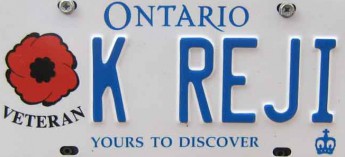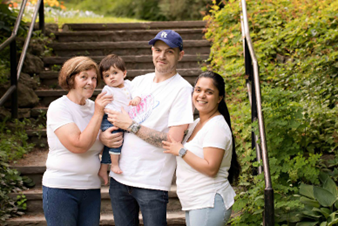
Month: December 2022
Merry Christmas
Mail Order Brides
Recently there was an article on social media about Indian expats in Europe still seeking an arranged marriage. The irony is that it was written by a professional matchmaker of Indian origin based in Europe.
Arranged marriages among the next gen in our family in India is on the decline. The youth want to select their mates on their own rather than opt for an arranged marriage. It could well be that the children are allowed free choice. Our generation was not allowed this freedom, more out of social and economic considerations. “Who can love whom and by how much was written in the love laws a long time ago,” lamented Arundhati Roy in the God of Small Things. But mercifully by and large the next generation has chosen to break all abhorrent caste and religious barriers.
Similar is the case in North America, among people of Indian descent. Most of those who import brides/ grooms or Mail Order Brides/ Grooms – they have not been capable of finding their partners – or they were never allowed to do so. This mostly happens to children who immigrated in their high-school or later. For them it is difficult to merge into the North American system of dating.
On migration, the parents are unaware of the social realities of North America. Like us, many came with imported cultural and social values. This did not allow for flexibility in parenting and the eldest child generally took the brunt. By the time the next one reached high school, the strings were loosened, the parents by then a little more flexible.
One of our nieces who migrated while she was in high school is now a surgeon in the US. When her parents thought that she was marriageable, they generously asked her to look for a partner. She was furious and retorted “You never allowed me to date! Why? you did not even allow me to return home late! Now you want me to bring a boy home! Is it feasible?” She settled for an arranged marriage, but her younger sister married her long-time fiancé. In our case, we had migrated when our children were very young and perhaps, we as parents had more time to accept and merge into the new value system. Our daughter Nidhi married her fiancé and our son Nikhil lives with his fiancé.
Many who go in for mail order brides/ grooms are often dependent on their parents economically. This leaves them no choice other than to follow parental diktats. The situation is often pathetic in such cases. Caught between the nuances of different cultural values, often these marriages end up unhappy. This observation is personal and there is no empirical data to evaluate which system results in happier marriages.
Nowadays there is a proliferation in the Indian digital marriage market sponsored by various matrimony sites. In the traditional value system the task is now outsourced to these companies. It does not come cheap. To this imbroglio, throw in the religious and caste angle coupled with the tenets of astronomy, and we have the comical evolution of a traditional system into the digital age.
About 23 percent of the Canadians who marry overseas from India every year and file international spousal sponsorships have their applications rejected. This has prompted applicants to complain that Canadian visa officers are suspicious of all Indian marriages – even genuine ones. It’s a crime for a foreign national to marry a Canadian citizen or permanent resident only to gain entry to Canada.
Immigration, Refugees and Citizenship Canada (IRCC) is often not convinced that the relationship is genuine and was entered into for honest reasons. It is difficult to evaluate the genuineness of these cases, with each spouse telling different versions of events and at times even questioning the genuineness of supporting documents issued by many government institutions. In short, be doubly sure when you marry an overseas citizen.
Remember Dr Balamurali Ambatti, who made it into the Guinness Book of Records for becoming the world’s youngest MD in 1995. His achievements then were widely celebrated by Indian parents. Balmurali graduated from Baltimore City College at age 11, graduated from New York University and joined medical school at 14. At age 17, he received his MD from the Mount Sinai School of Medicine in New York.
Hyderabad police arrested Balmurali Ambati and three members of his family on a complaint filed by Balamurali’s wife that she was harassed by them for not paying a promised dowry. She said that the family had locked her in a room of her New York City apartment and allowed her to return to India with them on a visit only after she signed a document agreeing to a divorce.
You can visualise the reasons for the episode!!!
Three Musketeers
by Veteran Colonel RB Gowardhan
I was commissioned into 75 Medium Regiment (Basantar River,) a great unit which participated in 1971 war with elan and earned laurels. The Regiment had a unique combination of soldiers, Brahmin, Jat and South Indian Class. Being a Medium Regiment, the unit had all tall and well-built gunners. The unit won most of the sports trophies and excelled in all training competitions. The unit had moved from J & K to Gurgaon. Due to its proximity to New Delhi, unit was posted with full complement of officers. During those days it was an honour and privilege to be the Adjutant of the Regiment.
Adjutant of the Artillery unit is responsible for administration and assist the Commanding Officer in administration, training and discipline. In the battle and training, the Adjutant’s duty is to control and coordinate fire of 18 guns of the Regiment.
I was lucky to have all three officer GPOs (Gun Position Officers) responsible to control fire of each battery and ready to assist me in all regimental duties. The first one was Captain Paramjit Singh Ralhan, a handsome sardar who graduated from IMA as Direct Entry. He had decent manners and a smiling face. Second was Lieutenant Koduvath Reji, Sainik School and NDA brat, who was enthusiastic and bubbling with energy, sometimes exceeded limit of his enthusiasm. The third one was Lieutenant Gulshan Rai Kausik, matured service entry officer with boxer built and red eyes. His looks were sufficient to make any soldier to behave. All three were josh machines and when ordered can produce anything.
Ralhan was of a great help to control discipline of Brahmin battery and to organize any event in the unit or officer’s mess. Ralhan with his diligence and demure resolved any kind of situation or indiscipline with his cool mind and report “Sir, no problem, matter is resolved.” I remember one incident, where the problem was created by a rogue soldier. Ralhan handled the situation exceedingly well and disciplinary action was taken against the defaulter.
Reji used to follow the dictum that as youngster commit any mistake but keep Adjutant informed. Therefore, it was quite often that I used to jump from the chair when he used to come and inform “Sir, chhotasa galati ho gaya.(Sir,I Committed a small mistake.)” The so-called small mistake used to be slapping Superintendent of Police or bashing up BSF Dy Commandant. It wasn’t for the wrong reasons, but we had to sort out the issues.
On 31 Oct 1984, Regiment’s column was ordered to move and take responsibility of security of Teen Murty Bhawan, where mortal remains of our late Prime Minister, Mrs Indira Gandhi were kept. Regiment was also responsible for controlling VIP visitors, who came there to pay homage to late Prime Minister. Reji, stopped Inspector General of Delhi Police, who along with family was sneaking through VIP gate. This resulted into arguments with the Police Officer asking, “What are you doing here and who are you to stop me?” Reji told that officer, “Had police been working properly, Army would not have come to control this.” This was being heard and observed by Minister-in-Charge there Mr Shivraj Patil and he appreciated Reji for his dedication to duty and rebuked Police Officer. Later, the Regiment received an appreciation letter and cash prize from the Minister.
Kaushik, with his presence of mind could handle any situation. Once the Regiment was playing final match of Kabaddi with Rocket Regiment, the hosts. They had arranged referees who were biased and obvious that they were helping Rocket Regiment. Our soldiers could not tolerate that injustice and warned referees. But referees again gave a wrong decision in favour of Rocket Regiment and our soldiers could no longer bear this injustice. They entered ground and caught hold of one of the referees. This resulted into commotion and big fight broke out between the soldiers of both Regiments. Adjutant of Rocket Regiment and I intervened to control the situation but we too faced the wrath of fighting soldiers. Lieutenant Kaushik fearlessly entered mob and with his commanding voice ordered Savdhan. To everyone’s surprise, we found all soldiers stood to attention. Then he ordered “Rocket Regiment dahine mood and Medium Regiment baye mood; tej chal.(Rocker Regiment Right Turn and Medium Regiment Left Turn; Quick March.)” Soldiers followed the orders and moved out of the field. The worst was averted.
All three officers were real assets in our Regimental life and during the training too. During firing of those monster 130 mm guns, I had to be careful and watchful as in Artillery they say that, once ordered and fired round/rounds of gun/guns cannot be corrected and result is depicted on the target. As an Adjutant, whenever all guns were ordered to fire together, I had to control my GPOs to ensure all guns fired accurately and in unison. As soon as I used to pass order for firing and report ready. Reji, who was most chatak(quick,) reacted and made his guns ready and report, thereafter, would not stop to point out mistakes of others if any. Ralhan, who was as cool as penguin checked, rechecked and took his time. To keep an atmosphere warm in his command post, I used to pass on heat online of fire control net. Kaushik, with good sense of hearing and watchful eyes used to take time and get ready. The end result was accurate and coordinated fire.
There is lot to write about them. I can never forget their contribution to maintain josh, discipline, and winning competitions. All three are now well settled – Ralhan in USA, Reji in Canada, and Kaushik in South Delhi. I wish them very best for their endeavours.
Sergeant Roy and Lieutenant Bobak
At the Canadian War Museum, thousands of people have seen a painting of a Black Canadian woman in a military uniform, standing behind a canteen counter, with crossed arms and a stern face. Most Canadians neither know the woman in the painting nor the artist. It is one of the most famous canvases to come from the brush of Molly Lamb Bobak, Canada’s first female war artist.
The painting is of Sergeant Eva May Roy and it remains in storage at the Canadian War Museum. She is one of many Black women who served in the Canadian Armed Forces during World War II and is among the people whose stories are largely missing not only from public record but from public conscience as well.
Roy was a trailblazer, who served overseas at a time when it was rare to see a Canadian military woman working in Europe. After the war broke out, Roy left her job as a presser in a laundry to become a machine operator and fuse assembler at the General Engineering Co. munitions plant in Scarborough, Ontario.
Roy enlisted in 1944 and joined the CWAC, a new division created just three years earlier. CWAC had 50,000 women in its ranks during World War II in support roles ranging from cooking to decoding. Roy trained as a cook and served in military canteens in Canada, the United Kingdom and Holland.
Many people associated with Roy say that the stern image presented by her portrait is somewhat misleading. She had an outgoing personality, was enthusiastic about the army and loved to sing.
After returning to Canada in January 1946, Roy worked as a government postal clerk in Toronto. Almost a decade later, when CWAC launched another recruiting campaign, Roy re-enlisted, served from 1955 to 1965 and attained the rank of sergeant. She died in 1990.
Molly Lamb Bobak (1920–2014) was the first Canadian woman war artist. In 1942 Bobak joined the Canadian Women’s Army Corps (CWAC) and was appointed Official War Artist with the rank of Lieutenant in 1945. She served overseas in London where she painted women on military training as well as dynamic scenes of marches and parades.
Upon her return from London, Molly married fellow war artist Bruno Bobak. For her role in the Second World War and many other accomplishments she was elected to the Royal Canadian Academy of Arts in 1973 and presented with the Order of Canada in 1995.








